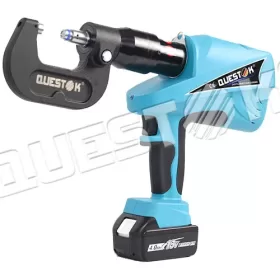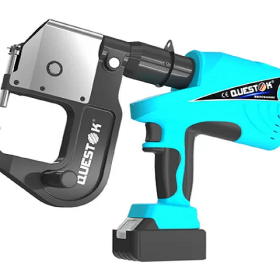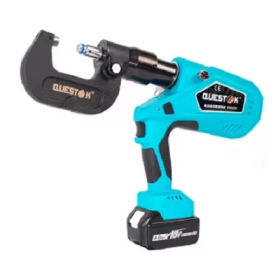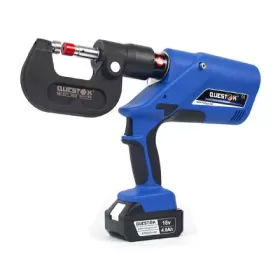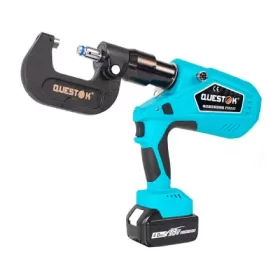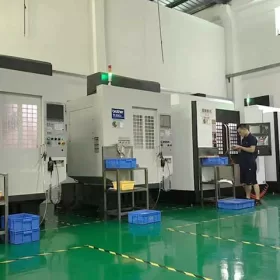Design Tips for Incorporating Rivetless Clinching in Your Work
Rivetless clinching is a joining method that creates a permanent bond between two metal sheets without the use of rivets or other fasteners. It is a versatile and cost-effective alternative to traditional riveting techniques, and it can be used in a variety of applications, including automotive, aerospace, and electronics manufacturing.
To achieve successful rivetless clinching, it is important to follow proper design guidelines. Here are some key design tips to consider:
Material Considerations
– Sheet Thickness: The ideal sheet thickness for rivetless clinching is typically between 0.5mm and 2.0mm. Thinner sheets may not provide sufficient material for the clinch, while thicker sheets may require excessive force and can result in damage.
– Material Properties: The strength and ductility of the material play a crucial role in the clinching process. Materials with good ductility, such as aluminum and mild steel, are well-suited for rivetless clinching. Brittle materials, such as cast iron and hardened steels, are not recommended.
Joint Design
– Joint Geometry: A clinch is formed by overlapping two sheets and deforming them together. The overlap length should typically be 2-3 times the sheet thickness, and the joint should be designed to ensure proper load bearing and strength.
– Edge Preparation: The edges of the sheets should be clean and free from burrs or other imperfections. Proper edge preparation ensures consistent clinching results.
Clinching Tool Selection
– Clinching Force: The clinching force required is dependent on the material properties, sheet thickness, and joint design. It is important to select a clinching tool with sufficient force to create a secure clinch without damaging the sheets.
– Clinching Tool Geometry: The shape and size of the clinching tool will determine the form of the clinch. Different tool geometries are available for different applications and materials.
Production Considerations
– Tool Setup: Proper tool setup is essential to ensure consistent clinching results. The tool should be aligned and calibrated according to the manufacturer’s specifications.
– Process Monitoring: Monitoring the clinching process is important to detect any abnormalities or defects. This can be done through visual inspection, force monitoring, or other sensing techniques.
– Quality Assurance: Implementing quality assurance measures, such as sampling and testing, is necessary to verify the integrity of the clinched joints and ensure product reliability.
Conclusion
By following these design tips, manufacturers can successfully incorporate rivetless clinching into their production processes. This versatile joining method offers numerous advantages, including reduced material waste, improved joint strength, and cost savings. Proper design and process implementation will ensure the production of high-quality clinched joints that meet the specific requirements of the application.
- Company News
- Industry News
- Tag
- Tags
-
The Advantages of Questok Rivet Guns: Precision, Efficiency, and Durability
In industrial fastening applications, the choice of tools directly impacts productivity, safety, and long-term cost-effectiveness. Questok rivet guns have emerged as a standout solution for professionals across aerospace, automotive, and construction sectors. Combining advanced engineering with user-centric design, these tools deliver unmatched performance. Below are the key advantages that make Questok rivet guns a preferred choice:
-
Rivet Gun FAQ
Rivet Gun FAQ-SPR
-
Fast Assembly and Repair With Cordless Solid Rivet Gun
Questok cordless solid rivet gun stands out as a pivotal innovation, merging portability with power to facilitate efficient and effective fastening in a myriad of applications.
-
Redifine The Role of Self-piercing Riveting Gun Machine
Self-piercing riveting adopts high-speed mechanical fastening skill that joins thin sheet materials, typically steel and aluminum alloys.
-
The Latest Innovations in Clinching Tool Design
Explore the latest innovations in clinching tool design, redefining precision, efficiency, and versatility in material joining.
-
The Application and Maintenance of Self-Piercing Rivet Guns
Delve into the applications of self-piercing rivet guns in the automotive and aerospace industries and reveal the essential maintenance practices that ensure their accuracy and efficiency.
-
Rivetless Riveting Gun for Ventilation Duct Projects
The ventilation duct rivetless gun is a tool for riveting ventilation ducts without rivets.
-
Guide to Using Self-Piercing SPR Riveting Gun
In the automotive industry, self-piercing SPR (Self-Piercing Rivet) riveting guns are commonly used for joining metal components in vehicle bodies, including BMW vehicles.
-
Rivet Gun FAQ
Rivet Gun FAQ-SPR
-
User-Friendly Features- Making Riveting Easy with Electric Blind Rivet Guns
Electric blind rivet guns are essential tools for industrial applications, providing a convenient and efficient way to fasten materials together. These tools have significantly advanced, incorporating user-friendly features that enhance their functionality and ease of operation. This article explores several key user-friendly features of electric blind rivet guns, highlighting how they simplify and streamline the […]
-
Unleashing Potential- Unlocking the Versatility of a Handheld Rivet Gun
In the realm of construction and fabrication, precision and efficiency reign supreme. Among the indispensable tools that empower craftsmen and DIY enthusiasts alike, the handheld rivet gun stands as a beacon of versatility and innovation. This unassuming device harbors a hidden potential that belies its compact form, offering a plethora of applications that unlock unbounded […]
-
Versatile Fastening- Applications of the Handheld Rivet Gun Across Industries
In the realm of fastening, the handheld rivet gun stands as a testament to ingenuity and versatility. Its ability to effortlessly join materials with sheer strength and permanence has revolutionized manufacturing and construction processes, leaving an enduring mark on diverse industries. Aerospace: Where precision and reliability are paramount, the rivet gun shines. In aircraft assembly, […]
-
The Role of Automation in Electric Rivetless Clinching
Electric rivetless clinching (ERC) is a lightweight joining process that eliminates the need for rivets or other fasteners. This can lead to significant cost savings and increased production efficiency. Automation plays a critical role in ERC, enabling high-speed and high-volume production. Automated Feed Systems Automated feed systems are used to accurately position the two workpieces […]
-
Why Choose a Universal Self-Piercing Riveting Gun for Your Projects?
In the realm of construction and fabrication, riveting guns stand as indispensable tools for creating secure and robust connections. Among the various types available, universal self-piercing riveting (SPR) guns have emerged as a game-changer due to their versatility and efficiency. This article will delve into the compelling reasons why choosing a universal self-piercing riveting gun […]
-
Why Choose Stainless Steel Hollow Rivets for Your Projects?
In the world of industrial manufacturing, choosing the right fasteners for your projects is crucial for ensuring longevity and reliability. Among the many options available, stainless steel hollow rivets stand out as a superior choice for a wide range of applications. This article delves into the compelling reasons why stainless steel hollow rivets are the […]
-
Top Trends in Electric Rivetless Clinching Guns
In the realm of fastening technology, electric rivetless clinching guns have emerged as a revolutionary solution for a wide range of industrial applications. These advanced tools offer several преимущества and capabilities, revolutionizing the way businesses approach their fastening needs. Adoption of Brushless Motors Brushless motors have gained significant traction in electric rivetless clinching guns due […]

